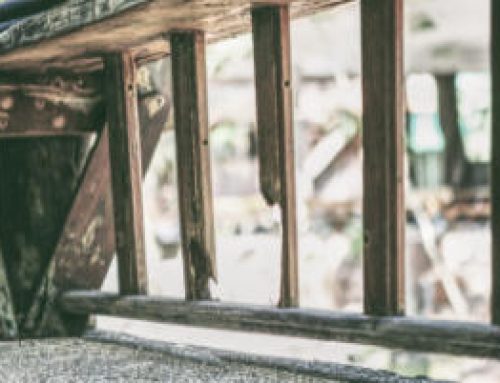Installation of electrical components such as the electrical outlet and electrical box is strictly regulated in order to protect consumers and homeowners.
Ground Pin Orientation
When mounting an electrical outlet, should the hole for the ground pin be on the top or the bottom? Because the National Electrical Code (NEC) doesn’t offer a definitive answer, there are reasons that either way can work.
Ground Pin Up Reasoning
With the ground pin on the top, it provides a more stable connection if the plug came loose and a metal object were to fall from above onto it. This ground plug does not usually carry current so the metal object would not come into contact with the live prongs. The plastic surrounding the ground plug is also thicker and can help to hold the plug into place more securely.
Ground Pin Down Reasoning
When grabbing a plug to disengage it from the electrical outlet, a person’s index finger generally reaches around the bottom of the plug. Therefore, their finger would be more likely to come into contact with the ground plug rather than the live prongs. In addition, many household items like lamps, chargers and timers are oriented for plugging into a prong-down outlet. GFCI electrical outlets are also meant to be installed ground pin down, as they feature text on the test and reset buttons that orient in this way.
NEC and NFPA Code Requirements for Electrical Boxes
A regulation for the installation of electrical boxes comes from the National Electric Code. It reads: “NEC 314.20 in Wall or Ceiling: In walls or ceilings with a surface of concrete, tile, gypsum, plaster, or other noncombustible material, boxes employing a flush-type cover or faceplate shall be installed so that the front edge of the box, plaster ring, extension ring, or listed extender will not be set back of the finished surface more than 6mm (1/4 in.).”
It continues with: “Installations within a surface of wood or other combustible surface materials, boxes, plaster rings, extension rings, or listed extenders shall extend to the finished surface or project therefrom.”
What this means is that per the NFPA 70 (the latest edition of the National Electrical Code offered by the National Fire Protection Association), the installation of an electrical box behind a stone backsplash in a kitchen or bath is unacceptable, and therefore will not pass code inspection. The box is required to flush with the surface, or requires an extension to enable it to be flush with the surface. It is otherwise referred to as a flush-mounted installation.
If the electrical box is recessed into the wall, it will not pass inspection. Drywall and plaster around boxes utilizing flush-type covers must also be repaired so that there are no gaps greater than 1/8” around the edges of the box.
Electrical Inspection Rules
Your electrical inspection must meet minimum requirements for electrical safety, based on the current codes. This is to protect you, the homeowner, from potential fire or electrocution risks. When electrical work is done on your home, a proper local permit is required prior to commencement of any work, whether you do it yourself or you hire a professional electrical contractor. Failure to acquire a permit or inspection can jeopardize not only your safety, but your ability to obtain insurance, file claims, or sell your home in the future.
You will need to undergo two electrical inspections, generally performed by the governing body that issued the permit. The first is at the rough stage, when the wiring has been completed but not covered up by the wall or ceiling material yet. The second is once the construction has been completed. A final inspection must be passed before approval for occupancy can be issued.
The inspector will review the equipment, its listing and labeling, electrical service, circuitry, arc-fault protection, GFCI or ground-fault protection, grounding and bonding, underground wiring, and wiring methods.
If your inspection finds you do not meet electric code standards, it will be marked as failed, and you will need to have it corrected and reinspected.
What if You Suspect an Electrical Error or Problem?
Arming yourself with knowledge about things like electric codes (information you can learn through our blog) helps you monitor contractors hired to work within your home. You may see items that cause you to question a contractor’s work, or suspect that work is not being performed correctly.
In that case, who do you turn to for verification of your suspicions? Först Consulting Group.
We are an independent consulting firm hired to perform critical inspections on behalf of homeowners. As experts in electrical codes, we can review your contractor’s work, or review your entire electrical system, to spot for construction errors. If we find any, we document our findings thoroughly and provide you with evidence and a complete report that you can use to require that the work be done correctly. If you need a second opinion, we can provide that also.
Först Consulting Group’s business is based on its commitment to protecting homeowners from fraud and injury due to construction errors. We are often called in by attorneys and insurance companies for expert inspections and expert witness testimony to back up their legal cases. We can be that same type of resource for you, the local homeowner.
If you’re located in the Northern Virginia or Washington, D.C. metropolitan area, please contact us.


